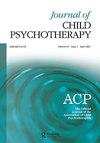Addressing the baby and atypical maternal behaviour in psychoanalytic parent-infant psychotherapy
IF 0.8
Q4 PSYCHOLOGY, CLINICAL
引用次数: 0
Abstract
ABSTRACT This paper aims to further our understanding of the process of therapy in psychoanalytic parent-infant psychotherapy (PPIP). Using a single-case study methodology, it examines the emergence of atypical maternal behaviours in the sessions and considers direct therapeutic work with the baby. The research material for this study consists of video tapes and verbatim transcripts of two sessions from different time points in one good outcome PPIP treatment. The Atypical Maternal Behaviour Instrument for Assessment and Classification (AMBIANCE) coding system is used as a basis for identifying atypical maternal behaviours, as they manifest in the sessions. In addition, the therapist’s intervention in moments of interactive disruption are analysed discursively, with a focus on the utterances that directly address the infant. Findings suggest that the mother exhibited a high frequency of disruptive behaviours, as coded in the AMBIANCE, in the beginning of therapy. These decreased considerably by the end of treatment. In addition, the therapist was seen to respond consistently and flexibly to maternal disruptive behaviours, employing different interventions. Furthermore, the therapist talked directly to the baby for a significant amount of the session time, especially early on in treatment, addressing several different issues. Disrupted maternal behaviours can be discerned and systematically observed in PPIP sessions; these may be addressed in psychoanalytic parent-infant psychotherapy through the therapist’s verbal and nonverbal interactions with the mother and baby. Using different coding systems to examine patterns of interaction in detail, it is possible to gain insight into the therapeutic process, furthering our understanding of change mechanisms in psychoanalytic work with infants and their parents.精神分析母婴心理治疗中的婴儿和非典型母亲行为
摘要本文旨在进一步了解精神分析亲子心理治疗(PPIP)的治疗过程。使用单例研究方法,它检查了会议中出现的非典型母亲行为,并考虑与婴儿直接治疗工作。本研究的研究材料包括在一个良好结果的PPIP治疗的不同时间点的两次会议的录像带和逐字记录。非典型产妇行为评估和分类工具(AMBIANCE)编码系统被用作识别非典型产妇行为的基础,因为它们在会议中表现出来。此外,在互动中断的时刻,治疗师的干预进行了话语分析,重点是直接针对婴儿的话语。研究结果表明,在治疗开始时,母亲表现出高频率的破坏性行为,正如AMBIANCE所编码的那样。这些在治疗结束时显著下降。此外,治疗师被认为对母亲的破坏性行为做出了一致而灵活的反应,采用了不同的干预措施。此外,治疗师在治疗的大部分时间里都直接与婴儿交谈,特别是在治疗的早期,解决了几个不同的问题。在公私合作伙伴关系会议中,可以识别和系统地观察到中断的孕产妇行为;这些可以在精神分析亲子心理治疗中通过治疗师与母亲和婴儿的语言和非语言互动来解决。使用不同的编码系统来详细检查相互作用的模式,有可能深入了解治疗过程,进一步了解我们对婴儿及其父母的精神分析工作中的变化机制。
本文章由计算机程序翻译,如有差异,请以英文原文为准。
求助全文
约1分钟内获得全文
求助全文
来源期刊

JOURNAL OF CHILD PSYCHOTHERAPY
PSYCHOLOGY, CLINICAL-
CiteScore
0.70
自引率
50.00%
发文量
46
期刊介绍:
The Journal of Child Psychotherapy is the official journal of the Association of Child Psychotherapists, first published in 1963. It is an essential publication for all those with an interest in the theory and practice of psychoanalytic psychotherapy and work with infants, children, adolescents and their parents where there are emotional and psychological problems. The journal also deals with the applications of such theory and practice in other settings or fields The Journal is concerned with a wide spectrum of emotional and behavioural disorders. These range from the more severe conditions of autism, anorexia, depression and the traumas of emotional, physical and sexual abuse to problems such as bed wetting and soiling, eating difficulties and sleep disturbance.
 求助内容:
求助内容: 应助结果提醒方式:
应助结果提醒方式:


